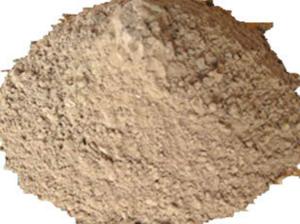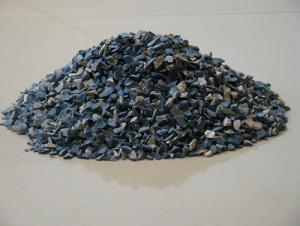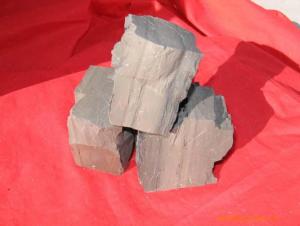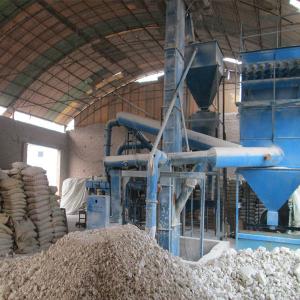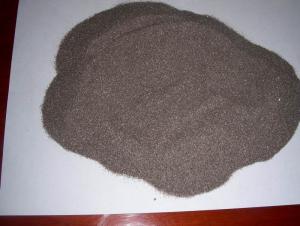CNBM Good Quality Bauxite Slagging flux-made in China
- Loading Port:
- Tianjin
- Payment Terms:
- TT or LC
- Min Order Qty:
- 1 m.t.
- Supply Capability:
- 40000 m.t./month
OKorder Service Pledge
OKorder Financial Service
You Might Also Like
Bauxite, also known as high-alumina fine powder, specializes in the production of 325 mesh bauxite specifications for alcohol-grade coatings, lost foam coatings, casting coatings and other specifications. Other specifications can also be processed as required. Pass rate 95% and aluminum content 65% -68% high-aluminum fine powder is made of bauxite raw meal through high-temperature roasting, crushing, screening, Raymond, iron removal and other machining processes. It has high aluminum, low iron content, high hardness, low thermal expansion coefficient, and refractory Excellent high-alumina sand and high-aluminum fine powder products with high temperature and stable thermochemical properties are used in refractory products. High bauxite clinker has a high refractoriness of 1780℃, strong chemical stability and good physical properties。
Bauxite is also called bauxite or bauxite. Its main component is alumina, which is hydrated alumina containing impurities and is a kind of earthy mineral. White or off-white, brownish yellow or light red due to iron content. Density 3.45g/cm3, hardness 1-3, opaque, brittle. Extremely difficult to melt. Insoluble in water, soluble in sulfuric acid and sodium hydroxide solution. Mainly used for aluminum smelting, precision casting, preparation of refractory materials, and heat preservation materials.
product category:
70/75/80/85 bauxite clinker, raw meal, bauxite aggregate (granule), bauxite fine powder, etc.
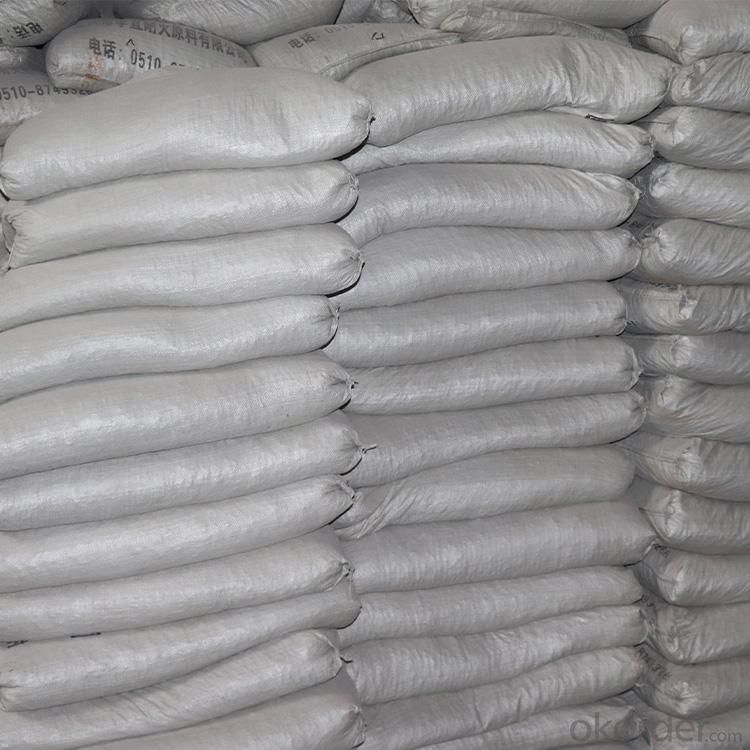
- Q:How to measure the influence of high-temperature performance of the products refractory in the formation of the liquid phase.
- Seeing whether it can affect the usage of the refractory material, and seeing to reduce the impurity, what's the condition of temperature of the liquid phase. Practically, whether it has any difference if you can improve, load under load and creep and reduce the impurity content. In the refractories, producing liquid are the influence of impurities, high temperature resistant strength, compared the use of the refractory material temperature: testing compressive strength after burn. If there are any impact: knowing the main crystal phase of matrix composition and content, improving the content of the main crystalline phase can improve the high temperature performance of refractory materials.
- Q:What are the physical properties of refractory material?
- The mechanical properties of refractory material include compressive strength, volume density and sclerosing, slag resistance, elastic modulus, thermal shock resistance, oxidation resistance, bibulous rate, fluidity, resilience, bond strength and slump, electrical conductivity, specific heat, heat capacity, the impact strength, linear change, torsional strength, stomatal aperture distribution, resistance to acid, etc. The use performance of refractory material include refractoriness, thermal emissivity, condensation, porosity, coefficient of thermal expansion. Thermal properties of refractory material include thermal conductivity, temperature conductivity, plasticity, the hydration resistance, creep performance. The physical properties of the refractory materials include structure performance, mechanical properties, shear strength, load softening temperature, CO erosion resistance. The structure properties of the refractory materials include porosity, alkali resistance and sintering. The operating performance of refractory material include consistency, tensile strength, the use performance and operating performance, wear resistance, bending strength, thermal properties.
- Q:Manganese steel belongs to refractories
- Material wear and other harsh working conditions, extrusion, there will be work-hardening phenomenon rapidly on the surface. The most important feature of manganese steel is that it is not refractory under a strong impact, and under extrusion conditions, part of it will be fractured. The main form of damage is wear and consumption: It is a kind of inorganic non-metallic material whose refractoriness is not lower than 1580 ℃, mainly used to endure impact. Manganese steel is a kind of high strength steel, which is free of deformation, so that it can remain austenite good toughness and ductility at heart while keeping good wear resistance at the same time on hardened layer. Refractories are
- Q:Which kind of furnace hearth refractory is better?
- Coal is acidic medium, so the matched material should be acidic refractories oriented, like silica?bricks. For example, the coking coke oven and carbon furnace made of carbon are in reducing atmosphere, so they use silica bricks which have low price and good high-temperature indicators. If the part has special requirements, you can then consider other refractory on request.
- Q:Please answer the questions about the packing and transportation requirements of refractory materials.. Requirements for packing of refractory bricks
- Exports should be fumigated outside of South East asia. Pallet packing is the most common, convenient and inexpensive.
- Q:What are the materials for refractory materials? What are their names?
- Basic refractories in Magnesium Oxide and calcium oxide as the main ingredient, commonly used is brick. Magnesium Oxide 80% to more than 85% containing magnesia brick, has good resistance to alkaline slag and slag, refractory clay brick and brick high ratio. Mainly used in open hearth furnace, oxygen converter, electric furnace, non-ferrous metal smelting equipment and high temperature equipment.
- Q:What are the specifications of refractory kilns ?
- Since the coefficient of thermal expansion of the basic brick is large, expansion rate is about 1-1.2% under 1000 ℃ The literature indicates that: "Under the condition that the temperature was raised to 1000 ℃ and stress in brick lining is relaxed, 300N / mm2 of compressive stress can be produced, which is equals to ten times structural strength of ordinary magnesia chrome brick, six times structural strength of magnesia chrome brick, dolomite brick and spinel brick, so any basic bricks can not afford, " the paper also pointed out that " heat expansion rate of kiln body can partially compensate for expansion rate of the inner lining of 0.2% -0.4%, which is 1/3 of thermal expansion rate of ordinary magnesia-chrome brick under 1000 ℃. However, it occurs under thermal equilibrium conditions. Thereby, the kiln should be dried slowly, allowing the temperature of the kiln body to go up slowly, thus the role of compensation can be played. " This is the key to using the basic brick. " Procedures of refractory for cement kiln "( tentative one) has clearly regulated baking and cooling of the kiln in the first section of the fifth chapters. In the heating process, in particular when the temperature is in the range of 300-1000 ℃, heating rate must be less than 60 ℃ / h. This is very clear in theory but it is difficult to implement.
- Q:It the Special Fire-Proof Material belonged to ceramics? Is there a national standard of the Special Fire-Proof Material?
- The fiber and reinforcing material of the metal ceramic is also belonged to the Special Fire-Proof Material. ~~~~GB is too much trouble, GB online should ~~~ Lei Bao Refractories for you. The high temperature inorganic coating. 5. The refractory compound. 3. The high melting point oxide. You can search it on the internet according to the classification~~~~ The special refractories can be divided into five categories: 1. metal ceramic
- Q:I want to know what is the slim in the refractory bricks
- lining brick and refractory clay in the teeming ladle; high alumina brick, high alumina lining brick and high alumina refractory mortar can make cement kiln and glass melting furnace in the building materials industry for anti-slide. Taiyuan in Shanxi province is the famous place of origin; hard paste in the refractory clay is used as blast furnace refractory: // b, in agriculture as a fertilizer high alumina clay is also used in oil wells, which generally do not dip in water; accounting for 2/3 of abrasive products in the metallurgy, hard and semi-hard clay can be manufactured as ceramics for daily use. what you said should be slime. High-alumina clay can be resistant to high temperature after calcination! Refractoriness refractory clay refers that the refractoriness is more than 1580 ℃ with greater hardness and specific gravity and high refractoriness. except higher refractoriness, such as aluminum sulfate, the dosage accounts for about 70% of refractories; refractory clay and high alumina fused cast brick are widely distributed in China.
1. Manufacturer Overview |
|
|---|---|
| Location | |
| Year Established | |
| Annual Output Value | |
| Main Markets | |
| Company Certifications | |
2. Manufacturer Certificates |
|
|---|---|
| a) Certification Name | |
| Range | |
| Reference | |
| Validity Period | |
3. Manufacturer Capability |
|
|---|---|
| a)Trade Capacity | |
| Nearest Port | |
| Export Percentage | |
| No.of Employees in Trade Department | |
| Language Spoken: | |
| b)Factory Information | |
| Factory Size: | |
| No. of Production Lines | |
| Contract Manufacturing | |
| Product Price Range | |
Send your message to us
CNBM Good Quality Bauxite Slagging flux-made in China
- Loading Port:
- Tianjin
- Payment Terms:
- TT or LC
- Min Order Qty:
- 1 m.t.
- Supply Capability:
- 40000 m.t./month
OKorder Service Pledge
OKorder Financial Service
Similar products
New products
Hot products
Related keywords
